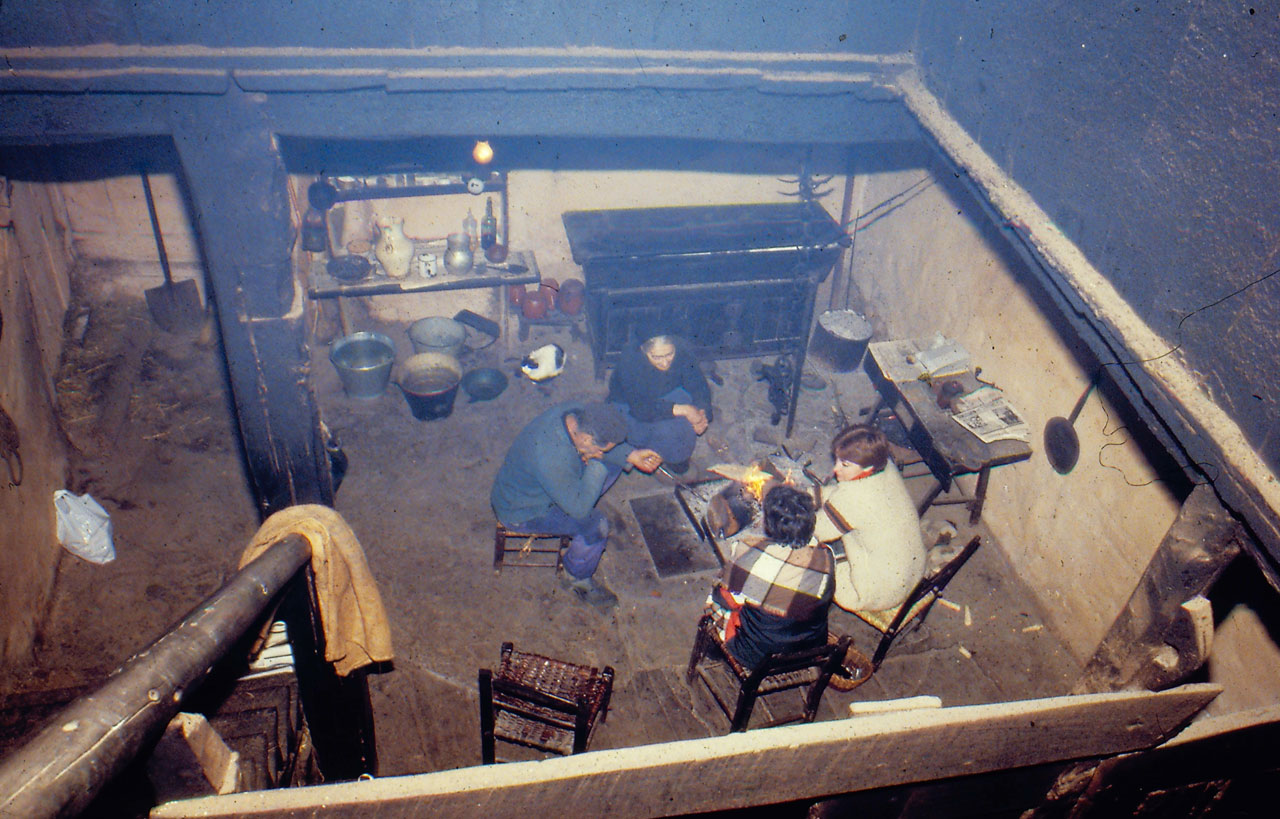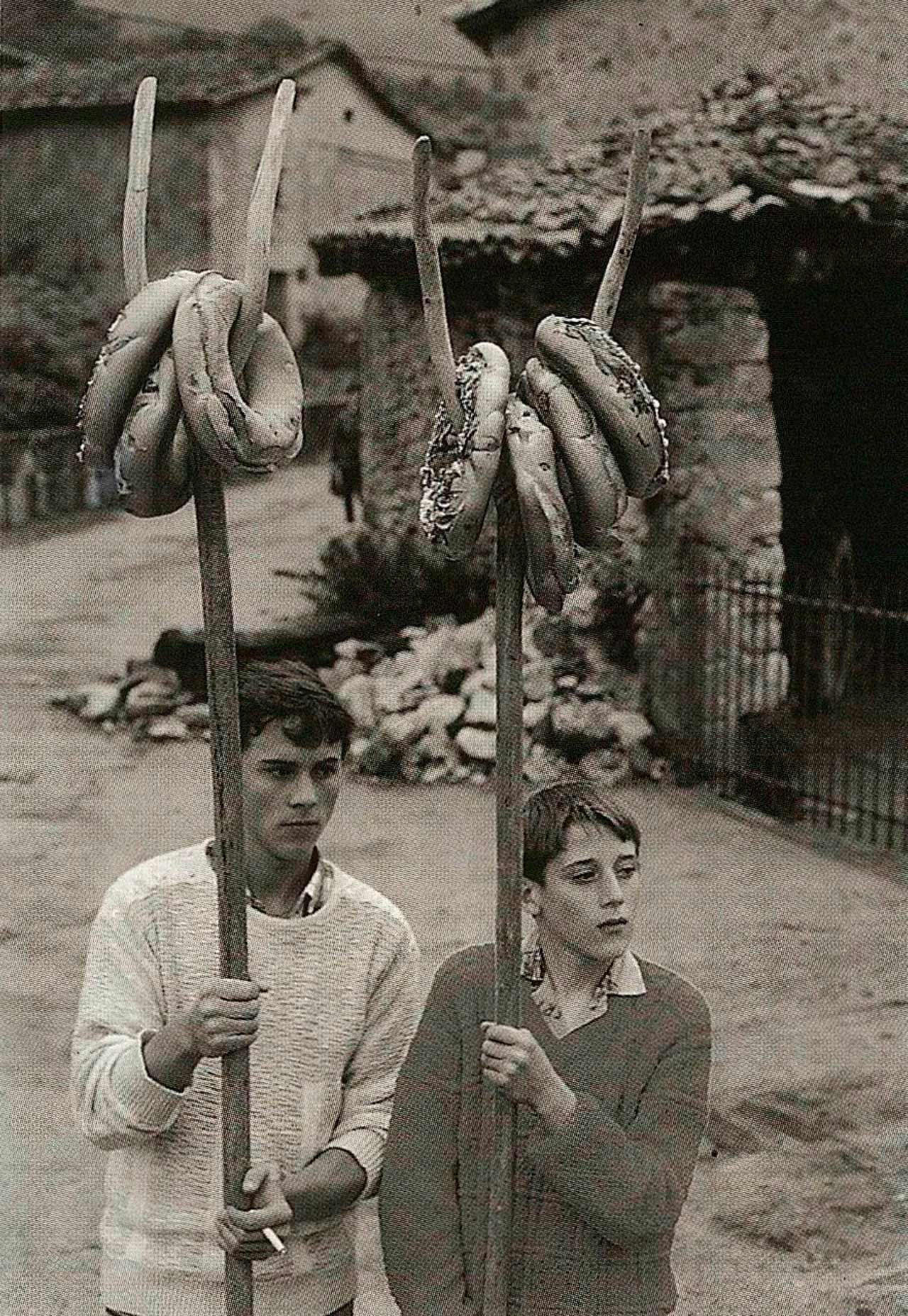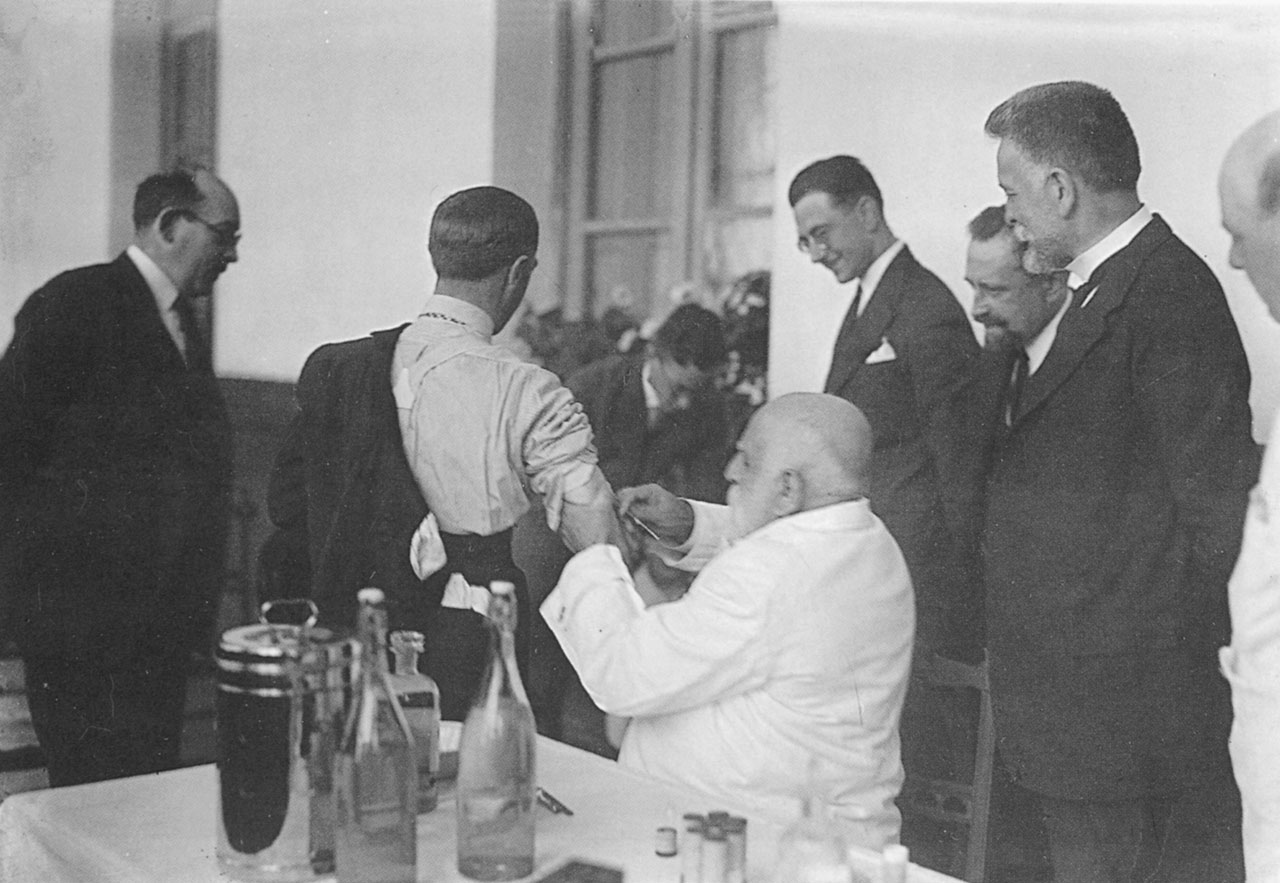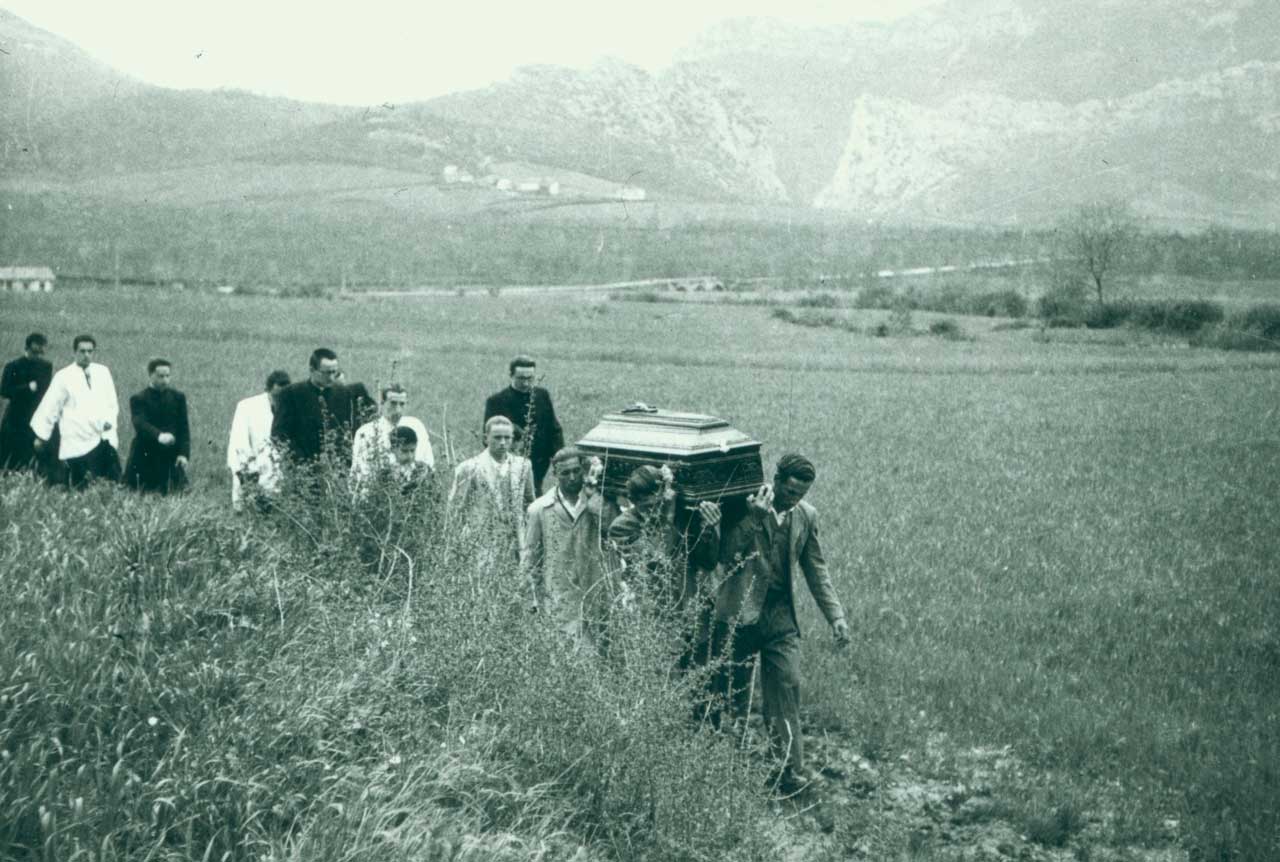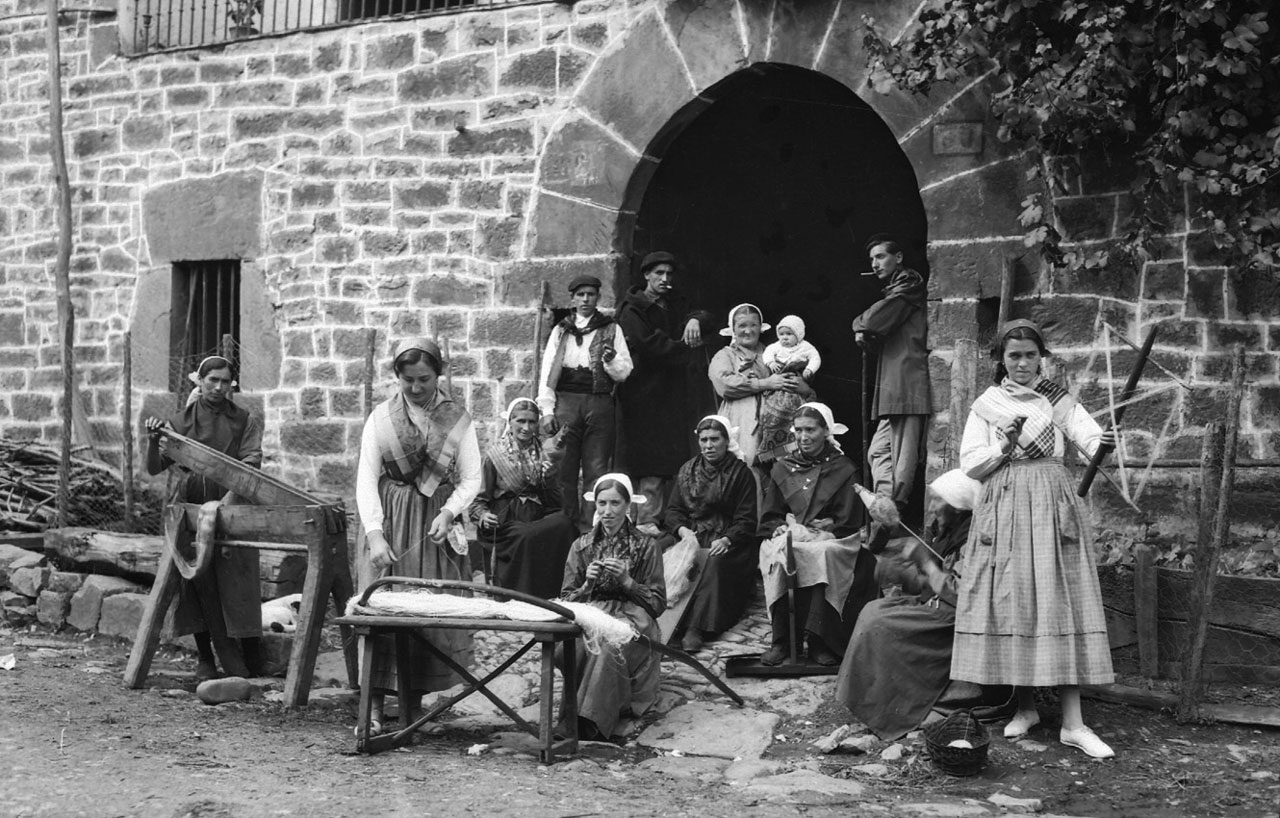Diferencia entre revisiones de «Main Page/en»
De Atlas Etnográfico de Vasconia
(Página creada con «{{DISPLAYTITLE: Ethnographic Atlas of the Basque Country}}») |
(Página creada con «====[/atlas/agricultura/Siega-de-trigo-Gesaltza-1950.jpg|Wheat harvest. Gesaltza (G), c. 1950. Source: Municipal Archive of Vitoria-Gasteiz: Enrique Guinea Collection.|Sats...») |
||
| Línea 286: | Línea 286: | ||
====[/atlas/agricultura/Descargando-el-grano-en-el-remolque-Argandona-2003.jpg|Unloading grain into the trailer. Argandoña (A), 2003. Source: Juan José Galdos, Etniker Euskalerria Groups.|Ezkur urte, laborte urte. <br />''Acorns a plenty, a year of prosperity.''||]==== | ====[/atlas/agricultura/Descargando-el-grano-en-el-remolque-Argandona-2003.jpg|Unloading grain into the trailer. Argandoña (A), 2003. Source: Juan José Galdos, Etniker Euskalerria Groups.|Ezkur urte, laborte urte. <br />''Acorns a plenty, a year of prosperity.''||]==== | ||
| − | ====[/atlas/agricultura/Siega-de-trigo-Gesaltza-1950.jpg| | + | ====[/atlas/agricultura/Siega-de-trigo-Gesaltza-1950.jpg|Wheat harvest. Gesaltza (G), c. 1950. Source: Municipal Archive of Vitoria-Gasteiz: Enrique Guinea Collection.|Satsitu ta jorratu ta garia hartu. <br />''Spreading manure and weeding and harvesting wheat.''||]==== |
| − | ====[/atlas/agricultura/Desgranando-semilla-Zerain-1961.jpg| | + | |
| − | ====[/atlas/agricultura/Laietan-Zeanurin-1920.jpg| | + | ====[/atlas/agricultura/Desgranando-semilla-Zerain-1961.jpg|Seed threshing. Zerain (G), 1961. Source: Karmele Goñi, Etniker Euskalerria Groups.|Selecting seeds has always been a fundamental activity. The best seeds were chosen from each harvest, and they were then stored and used for the next sowing season.||]==== |
| − | ====[/atlas/agricultura/Acarreo-de-los-haces-de-trigo-1940.jpg| | + | |
| − | ====[/atlas/agricultura/Recoleccion-de-oliva-a-ordeno-Moreda-2015.jpg| | + | ====[/atlas/agricultura/Laietan-Zeanurin-1920.jpg|Spading. Zeanuri (B), 1920. Source: Labayru Fundazioa Photograhic Archive: Felipe Manterola Collection.|Spades, ploughs, rakes, sickles, scythes and threshers were the essential tools for agricultural work.||]==== |
| − | ====[/atlas/agricultura/Utillaje-para-trabajar-el-lino-Zeanuri-1931.jpg| | + | |
| − | ====[/atlas/agricultura/Maizal.-Carranza--2016.jpg| | + | ====[/atlas/agricultura/Acarreo-de-los-haces-de-trigo-1940.jpg|Haulage of wheat sheaves. Álava, c. 1940. Source: Municipal Archive of Vitoria-Gasteiz: Enrique Guinea Collection.|Both animal and human power had a decisive impact on the way of working and on the crops until the introduction of modern machinery.||]==== |
| − | ====[/atlas/agricultura/Trilladora-y-costales-de-trigo-Navarra-1960.jpg| | + | |
| − | ====[/atlas/agricultura/Vecinos-trabajando-en-las-eras-Alegria-Dulantzi-1940.jpg| | + | ====[/atlas/agricultura/Recoleccion-de-oliva-a-ordeno-Moreda-2015.jpg|Milking of olive trees. Moreda (A), 2015. Source: José Ángel Chasco, Etniker Euskalerria Groups.|Uzta garaian lokartzen, miserian iratzartzen. <br />''Anyone who sleeps at harvest time wakes up destitute.''||]==== |
| − | ====[/atlas/agricultura/Sembrando-patata-a-azada-Abadino-2009.jpg| | + | |
| − | ====[/atlas/agricultura/Molino-de-Carranza-1977.jpg| | + | ====[/atlas/agricultura/Utillaje-para-trabajar-el-lino-Zeanuri-1931.jpg|Implements for linen making. Zeanuri (B), 1931. Source: Labayru Fundazioa Photograhic Archive: Felipe Manterola Collection.|Linoaren atsekabeak, amaigabeak. <br />''Producing fine linen is hard work.''||]==== |
| − | ====[/atlas/agricultura/Descargando-el-grano-en-el-remolque-Argandona-2003.jpg| | + | |
| + | ====[/atlas/agricultura/Maizal.-Carranza--2016.jpg|Maize field. Carranza (B), 2016. Source: Luis Manuel Peña, Etniker Euskalerria Groups.|San Jurgi, artoak ereiteko goizegi; San Markos, artoak ereinda balegoz. <br />''St George’s Day is too early to sow maize and St Mark’s Day is too late.''||]==== | ||
| + | |||
| + | ====[/atlas/agricultura/Trilladora-y-costales-de-trigo-Navarra-1960.jpg|Wheat being threshed and sacked. Navarre, c. 1960. Source: Archive of the Museum of Navarre: Nicolás Ardanaz Collection.|Maiatz luzea, gosea; garagarrilak ekarriko du asea. <br />''A very wet May, much straw and little grain.''||]==== | ||
| + | |||
| + | ====[/atlas/agricultura/Vecinos-trabajando-en-las-eras-Alegria-Dulantzi-1940.jpg|Neighbours on the threshing plots. Alegría-Dulantzi (A), c. 1940. Source: Municipal Archive of Vitoria-Gasteiz: Enrique Guinea Collection.|Elur asko den urtean, garia; eta erle asko dugunean, eztia. <br />''A year of snow, a year of plenty.''||]==== | ||
| + | |||
| + | ====[/atlas/agricultura/Sembrando-patata-a-azada-Abadino-2009.jpg|Sowing potato with a hoe. Abadiño (B), 2009. Source: Rosa M.ª Ardanza, Etniker Euskalerria Groups.|Flax fields and market gardens were the areas of the farm that required the greatest care, the pride of the farmer’s property and a cornerstone of the family’s wealth.||]==== | ||
| + | |||
| + | ====[/atlas/agricultura/Molino-de-Carranza-1977.jpg|Mill in Carranza (B), 1977. Source: Miguel Sabino Díaz, Etniker Euskalerria Groups.|Until the 1950s, flour mills were an essential aspect of the livestock-farming economy of our villages.||]==== | ||
| + | |||
| + | ====[/atlas/agricultura/Descargando-el-grano-en-el-remolque-Argandona-2003.jpg|Unloading grain into the trailer. Argandoña (A), 2003. Source: Juan José Galdos, Etniker Euskalerria Groups.|Ezkur urte, laborte urte. <br />''Acorns a plenty, a year of prosperity.''||]==== | ||
Revisión del 16:53 11 mar 2020
House and Family in the Basque Country


House and Family in the Basque Country
Su bako etxea, gorputz odol bagea. A house without fire is like a body without blood.
Family Diet in the Basque Country


Family Diet in the Basque Country
Children’s Games in the Basque Country


Children’s Games in the Basque Country
Before glass, and even clay, marbles were introduced, they used parts of plants, including oak acorns and seed pits.
Traditional Medicine in the Basque Country


Traditional Medicine in the Basque Country
Pharmaceutical products have gradually replaced traditional cures.
Rites from Birth to Marriage in the Basque Country


Rites from Birth to Marriage in the Basque Country
Charms, kutunak, were attached to children’s clothes and were said to protect them from the evil eye.
Funeral Rites in the Basque Country


Funeral Rites in the Basque Country
Dying on a rainy day or if it rained after the death showed that the soul would be saved: gorputz ona, euritsu.
Dolmen of Gaxteenia. Mendibe (NB), 1980. Source: Blot, Jacques. Artzainak. Les bergers basques. Los pastores vascos. Donostia: Elkar, 1984.
Livestock Farming and Shepherding in the Basque Country


Livestock Farming and Shepherding in the Basque Country
“The axial zone of the Basque Pyrenees retains underneath a maze of folds traits of a time-honoured culture.” J. M. Barandiaran
Agriculture in the Basque Country


Agriculture in the Basque Country
Linoaren atsekabeak, amaigabeak. Producing fine linen is hard work.
